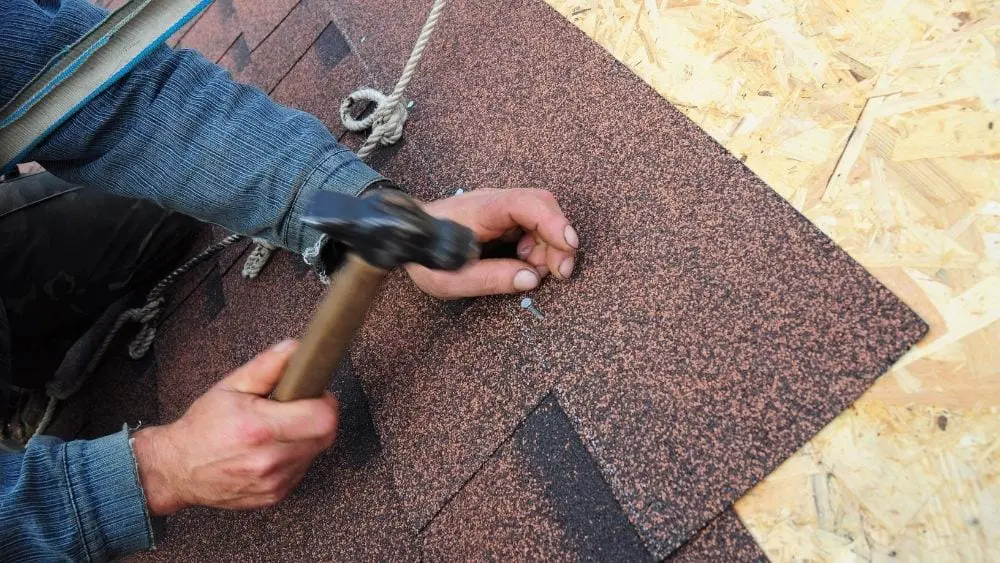
Whether you’re choosing a roof for your custom home, have an opportunity to decide between roof materials and styles on your new home, or need to replace your roof, you’ll find an array of available options. Asphalt roof shingles are by far the most popular material for a roof, but that doesn’t mean they are the right choice for every home. Since your roof is among the costliest components of your home, it’s wise to check out the pros and cons – as well as the prices – of a variety of roof styles and materials.
Pros and Cons of Asphalt Roofs
The main reason for the popularity of asphalt roofs is that they are comparatively inexpensive, ranging from $65 to $350 per square foot, according to Consumer Reports. Other options, such as faux slate roof shingles and metal roofs range from $310 to $1,140 per square foot. A slate roof can cost as much as $1,500 per square foot.
In addition to the low cost of materials, asphalt roofs are among the easiest and fastest to install, which saves labor costs and time. In some cases, the asphalt shingles can be installed on top of existing shingles, which eliminates the need to demolish your roof.
Asphalt shingles are available in many styles and colors and can even resemble wood or slate.
Some asphalt shingles are fire resistant and most are not damaged by algae. Granules on top of the shingles can deflect UV rays, which reduces damage to the roof and reduces heat penetration into your home on hot summer days.
There are some drawbacks to asphalt roofs, primarily because they may not last as long as some other types. Typically, an asphalt roof will last about 20 years. But the shingles may breakdown earlier than that because of exposure to the elements. Shingles may crack if fluctuating temperatures cause them to expand and contract. They can also curl or become detached, which could permit moisture to penetrate the shingle and allow water infiltration into your home.
Asphalt roof shingles are not considered environmentally friendly because they create greenhouse gas emissions during the manufacturing phase. The shingles are not 100 percent recyclable when your roof needs to be repaired or replaced, although they can be reused in sidewalks in some cases.
Three Types of Asphalt Shingles
Asphalt shingles are usually made of fiberglass with a layer of asphalt on one or both sides. The asphalt on the bottom is typically coated with a mixture of minerals and is waterproof. The top of the shingle usually has ceramic granules that help deflect UV light.
The three types of asphalt shingles include:
3-Tab Shingles: These asphalt shingles have three tabs in each shingle, which provides a uniform look. While they’re usually the least expensive choice, they are less durable and typically last just 12 to 15 years.
Impact-Resistant Shingles: These shingles have been tested and rated for their resistance to storm damage from hail and wind. They’re more costly than 3-tab shingles but offer more protection in storm-prone locations.
Architectural Shingles: These shingles, sometimes referred to as laminate or dimensional shingles, are made with two shingles in different widths and lengths laminated together. They can resemble a wood shake or a slate roof but have a much lower cost. They typically last 30 years compared to 20 year 3-tab shingles.
Climate Considerations
Depending on where your home is located, an asphalt roof may not be the best choice. While asphalt roofs are considered fire-resistant, other materials offer greater fire protection. If you live in an area that is subject to wildfires, you may want to discuss other options with your builder or roofing contractor.
Asphalt shingles are also vulnerable to high winds, heavy hail, and storm damage. If your location is pounded by frequent hurricanes, windstorms and hail, you may want to consider a more durable material.
While the granules on top of asphalt shingles deflect UV rays and offer some heat protection, if you live in area with extreme heat, other materials may offer better protection from the sun. You can also opt for an asphalt shingle in a lighter color for better sun and heat deflection.
Aesthetics and Your Roof
Asphalt roofs, which are among the most versatile of roof types, are available in a variety of colors, shapes, and styles. You can choose colors to complement your home’s exterior whether it’s made of siding, brick, stone, or wood. Asphalt roofs are commonly seen on modern homes, colonial homes, Victorian homes, Craftsman-style homes and ranch-style homes.
If you choose architectural shingles, your roof can easily mimic the style of a cedar shake or slate tile roof.
Whether you plan to install solar panels now or may consider doing so in the future, you may want to learn more about the compatibility and ease of installation of solar panels with the various roof styles and materials you’re considering. Your roof warranty may have a clause stating that solar panels – or even a satellite dish – will void it.
When reviewing your roof options, it’s important to consider not only the style, but also the cost, durability, and longevity of the material you choose. Most roofs come with a warranty and lifespan estimate. If you’re building your forever home, you may want to invest in a roof with the longest estimated life expectancy.

Michele Lerner is an award-winning freelance writer, editor and author who has been writing about real estate, personal finance and business topics for more than two decades.
 What is a Gable Roof? Everything You Need to Know
What is a Gable Roof? Everything You Need to Know